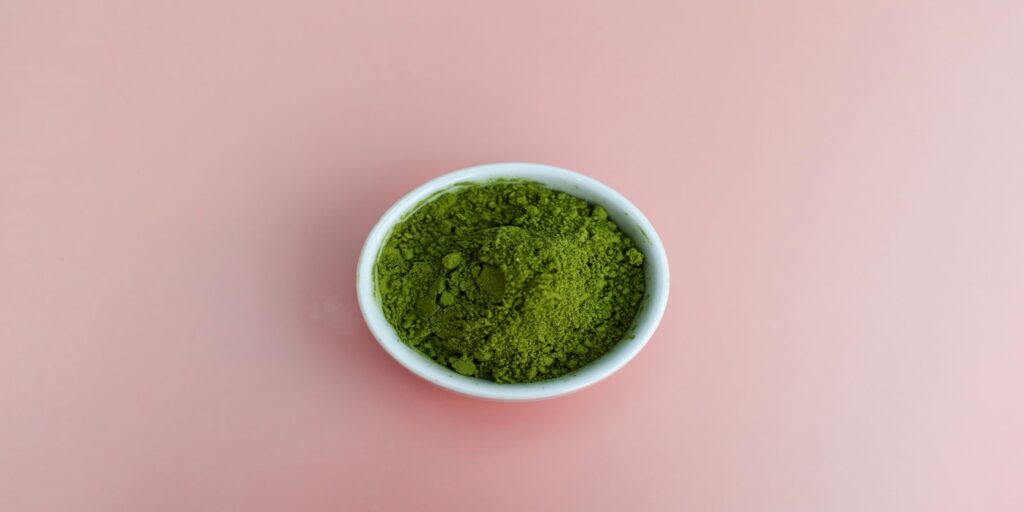Kratom
Kratom: Everything You Need to Know!
What is Kratom?
Kratom, also known as Mitragyna speciosa, is a tropical tree native to Southeast Asia, primarily found in countries like Thailand, Malaysia, Indonesia. The tree belongs to the Rubiaceae family, the same family as coffee. However, this plant has a long history of use in traditional medicine and ceremonial practices in the region due to its potential stimulating and analgesic properties.
Kratom thrives in moist and tropical environments, where it can grow up to a height of 25 meters! The tree has large, glossy leaves and produces small, yellowish flowers that grow in clusters. These trees grow best in fertile, well-draining soils and often thrive in areas with high humidity. Think rainforests! The leaves of the Kratom tree contain many chemical compounds:
Compounds:
- Mitragynine: This is the main alkaloid in Kratom leaves and is known for its analgesic and stimulating properties. It has an affinity for the opioid receptors in the brain, forming the basis for its analgesic effects.
- 7-Hydroxymitragynine: Although present in smaller amounts than mitragynine, 7-hydroxymitragynine is considered very potent. It also has an affinity for opioid receptors and contributes to Kratom’s analgesic effects.
- Speciogynine: This is an alkaloid found in lesser amounts than mitragynine and 7-hydroxymitragynine. It resembles mitragynine somewhat, but the exact pharmacological properties are not fully understood.
- Paynantheine: Although less researched than the previously mentioned compounds, paynantheine is believed to contribute to the overall effects of Kratom, although it appears to be less potent than mitragynine and 7-hydroxymitragynine.
These four main chemical compounds in Kratom leaves work together to produce a range of effects, ranging from pain relief to stimulation. Mitragynine and 7-hydroxymitragynine are particularly responsible for the analgesic and opioid-like effects of Kratom, while speciogynine and paynantheine may play a complementary role in enhancing these effects or producing other desired effects, such as relaxation or euphoria.
What are the effects of Kratom?
Effects at low doses (2 to 6 grams): At low doses, generally mild stimulating effects are experienced, similar to those of caffeine. Users report increased energy, alertness, and concentration. This makes it useful for enhancing productivity and reducing fatigue. Additionally, some people may experience improved mood and feelings of well-being at low doses. This also makes Kratom recreationally attractive.
Effects at high doses (6 to 12 grams): At higher doses, you can experience powerful sedative and analgesic effects. This can result in a feeling of relaxation and a reduction in pain. Some users also experience increased euphoria and feelings of well-being at high doses of Kratom. These effects are similar to those of opioid painkillers, although it is not as strong as prescription medications and is therefore considered less potent.
It is important to note that experiences with Kratom can vary among individuals, and not everyone will experience the same effects, even at the same dose. Additionally, factors such as the quality of the product, individual sensitivity and tolerance, and the conditions in which it is taken can all influence the experience.
Varieties & Colors:
Red Kratom: The red variant is often considered the most relaxing and calming option. It is known for its strong analgesic properties and is often used by people seeking relief from chronic pain or to relax after a long day. Red Kratom can also promote a sense of well-being and inner peace, and some users even experience mild sedative effects. This makes it a popular choice for evening use or before bedtime.
Green Kratom: The green variant is often considered a balanced option, offering both stimulating and calming effects depending on the dose. At low doses, green Kratom can promote increased energy and alertness, similar to caffeine. It can also enhance focus and cause a mild sense of euphoria. However, at higher doses, green Kratom may have more relaxing effects, similar to red Kratom, albeit less pronounced.
White Kratom: The white variant is known for its stimulating and energetic effects. It is often used by people seeking a natural way to combat fatigue and increase productivity. White Kratom can promote increased alertness, focus, and motivation, making it a popular choice for daytime use or during busy periods. Some users also report improved mood and feelings of euphoria after taking white Kratom.
History of Kratom:
The use of Kratom dates back to ancient times. It was traditionally used by local populations for many different purposes. Over the years, it has also become increasingly popular in the modern world, both as a natural supplement and recreational substance. People around the world are discovering the potential benefits for various applications, including pain relief, energy boosts, mood enhancement, and even as an aid in opioid withdrawal.
How to use Kratom:
Kratom can be consumed in various ways, depending on personal preferences:
- Chewing on fresh leaves: A traditional method still used in some regions of Southeast Asia.
- Brewing tea: Boiling Kratom leaves or powder into a tea is a popular way to consume it.
- Taking capsules: Many people prefer taking Kratom in capsule form for easy dosing.
- Mixing powder: Kratom powder can be mixed with water, juice, or a smoothie for consumption.
Are there any side effects?
Although Kratom is generally considered safe with moderate use, some people may experience side effects. These include nausea, dizziness, drowsiness, and constipation. It is important to use Kratom responsibly. Follow recommended dosages to minimize potential negative effects. Always consult a medical professional before using Kratom, especially if you are already taking medication or have health issues.
Is Kratom addictive?
There is much debate about whether this plant is addictive. While it is a potentially addictive substance on its own, there are some key considerations to be taken into account. Kratom contains alkaloids that can act on the opioid receptors in the brain, similar to opioid medications. This has raised concerns about the potential for addiction and abuse. However, the risk of addiction appears to be lower than with traditional opioids. Studies suggest that most people who use it recreationally do so in moderation and do not become addicted. Additionally, there is no evidence of physical dependence on Kratom with moderate use. Nevertheless, caution is important. Long-term and excessive use can lead to tolerance, dependence, and withdrawal symptoms upon cessation. It is also possible that people with a history of addiction are at a higher risk of developing problematic use of Kratom.


